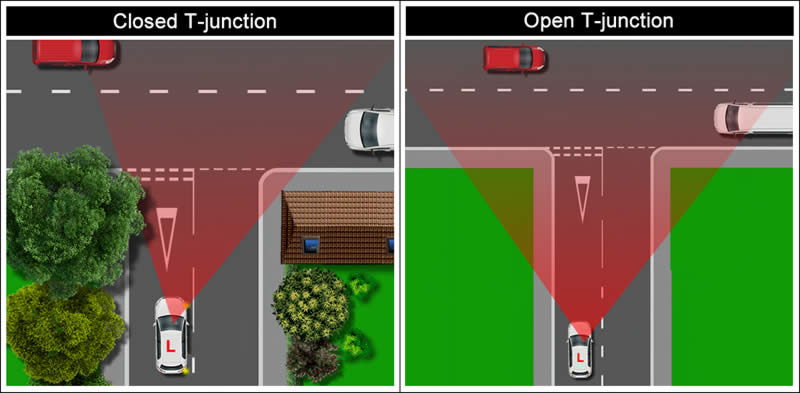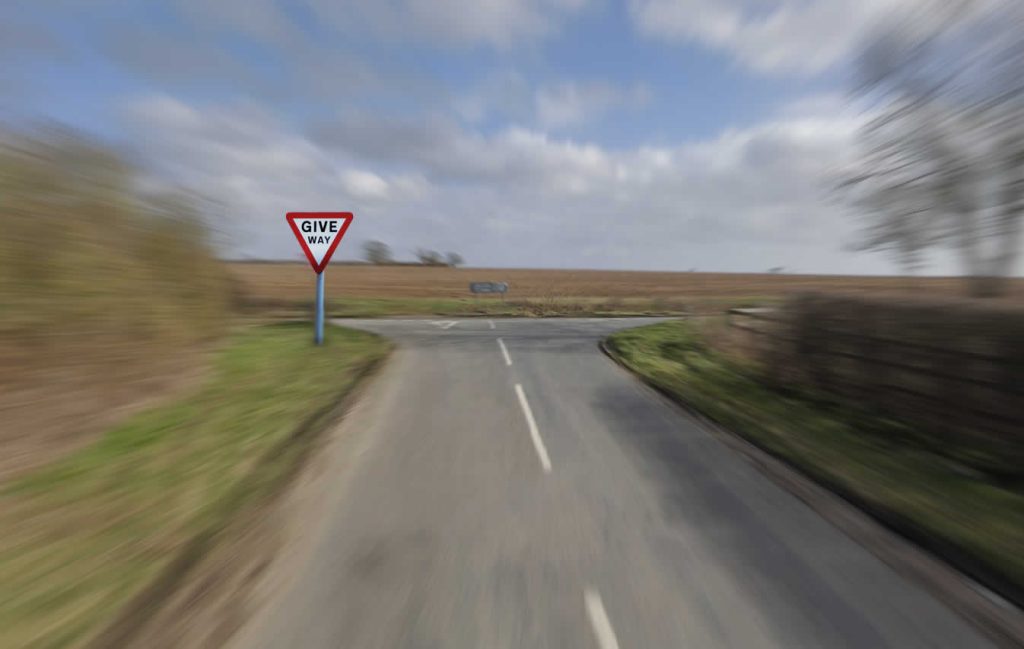The speed at which you approach a T-junction is based purely on what you can, or indeed cannot see of the major road you intend on joining. It’s important that as you get closer to the junction, you’re traveling at a suitable speed that allows you to take effective observation and safely stop if necessary.
Suitable Speed
On UK roads, 29 percent of all road accidents occur at T-junctions and staggered junctions. In terms of the practical driving test, the number one top most common reasons for all test failures in the UK are at junctions.
The large percentage of accidents and test failures can be attributed to speed, or more specifically, drivers approaching junctions too quickly and not allowing for effective observation. Approaching a T-junction too quickly either results in the driver having to stop abruptly or entering the major road without first ensuring it’s safe to do so. So how do you determine a suitable speed to approach a T-junction?
Open and Closed Junctions
As said earlier on, a suitable speed is determined by what you can, or cannot see of the major road you intend on joining. We call these ‘open’ or ‘closed’ junctions.

After you have carried out the MSPSL routine, cover the brake and let the car slow down to between 10 to 15 mph. Continue to observe potential hazards and also determine whether the T-junction is open or closed. An open T-junction allows you a clear view of the major road you intend on joining and a closed junction’s view is restricted by trees, hedges, fences etc.
If you’ve determined that it’s a closed junction, gently apply pressure to the brake pedal and continue to slow down. As you almost reach the junction, you should be traveling at walking speed. This allows you plenty of time to safely and smoothly stop just before the junction lines.
A similar action and speed should be carried out if the junction is open, but the difference with an open junction is that if you’ve determined that the major road has no approaching traffic, you can continue over the junction line without stopping (unless it’s a stop junction). So the process of approaching a T-junction should be:
- Check your mirrors and apply a signal
- Cover the brake to begin slow to between 10 to 15 mph
- Continue to observe hazards and determine if the junction is open or closed
- As you almost reach the junction line, you should be traveling no faster than a walking speed
By driving at a suitable speed, by the time you reach the junction line, you should have determined if the junction is open or closed, observed actual or potential hazards and determined whether or not you need to stop at the junction line.
